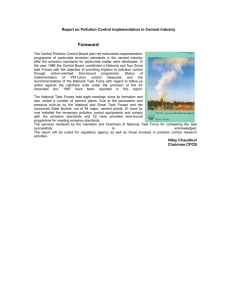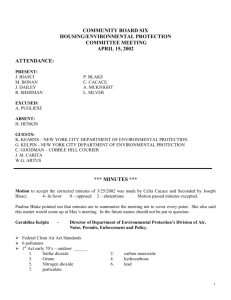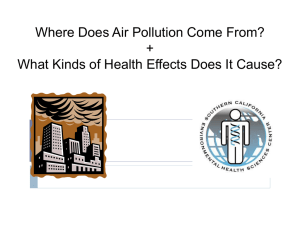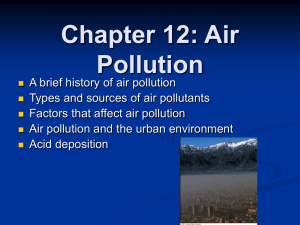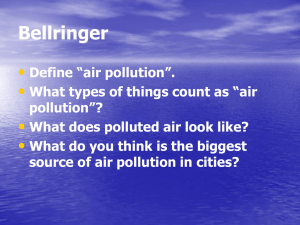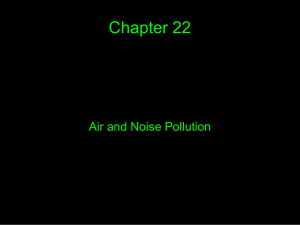DOC - Europa
advertisement
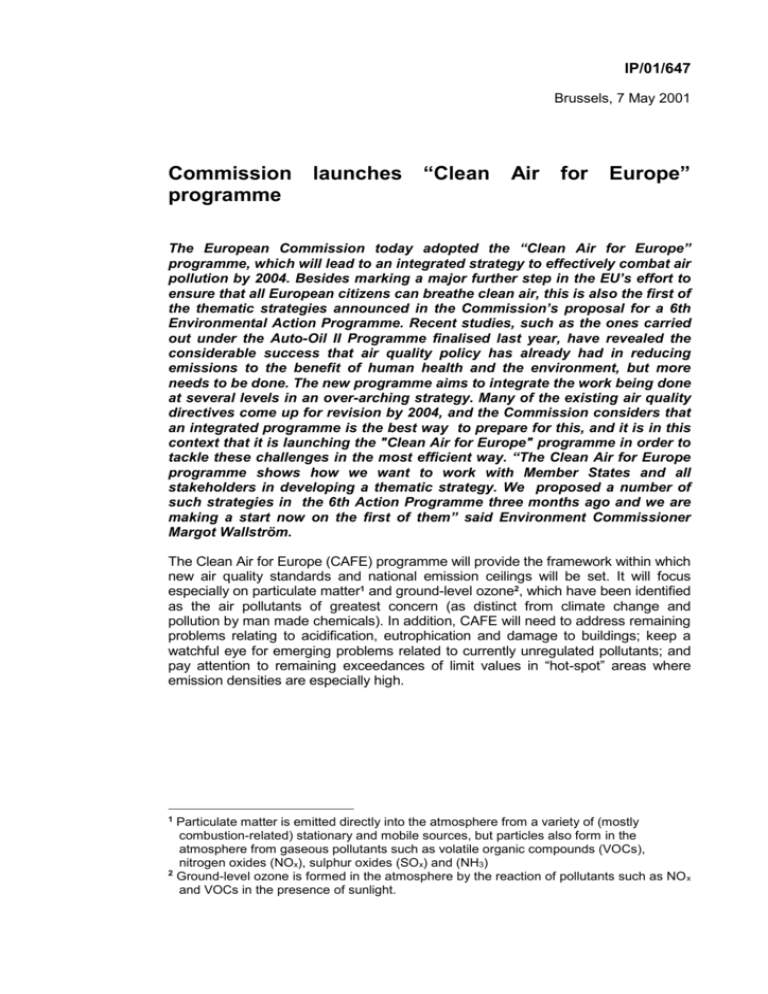
IP/01/647 Brussels, 7 May 2001 Commission programme launches “Clean Air for Europe” The European Commission today adopted the “Clean Air for Europe” programme, which will lead to an integrated strategy to effectively combat air pollution by 2004. Besides marking a major further step in the EU’s effort to ensure that all European citizens can breathe clean air, this is also the first of the thematic strategies announced in the Commission’s proposal for a 6th Environmental Action Programme. Recent studies, such as the ones carried out under the Auto-Oil II Programme finalised last year, have revealed the considerable success that air quality policy has already had in reducing emissions to the benefit of human health and the environment, but more needs to be done. The new programme aims to integrate the work being done at several levels in an over-arching strategy. Many of the existing air quality directives come up for revision by 2004, and the Commission considers that an integrated programme is the best way to prepare for this, and it is in this context that it is launching the "Clean Air for Europe" programme in order to tackle these challenges in the most efficient way. “The Clean Air for Europe programme shows how we want to work with Member States and all stakeholders in developing a thematic strategy. We proposed a number of such strategies in the 6th Action Programme three months ago and we are making a start now on the first of them” said Environment Commissioner Margot Wallström. The Clean Air for Europe (CAFE) programme will provide the framework within which new air quality standards and national emission ceilings will be set. It will focus especially on particulate matter1 and ground-level ozone2, which have been identified as the air pollutants of greatest concern (as distinct from climate change and pollution by man made chemicals). In addition, CAFE will need to address remaining problems relating to acidification, eutrophication and damage to buildings; keep a watchful eye for emerging problems related to currently unregulated pollutants; and pay attention to remaining exceedances of limit values in “hot-spot” areas where emission densities are especially high. 1 Particulate matter is emitted directly into the atmosphere from a variety of (mostly combustion-related) stationary and mobile sources, but particles also form in the atmosphere from gaseous pollutants such as volatile organic compounds (VOCs), nitrogen oxides (NOx), sulphur oxides (SO x) and (NH3) 2 Ground-level ozone is formed in the atmosphere by the reaction of pollutants such as NO x and VOCs in the presence of sunlight. Commissioner Wallström underlined: “We have come a long way in reducing air pollution, but we have not yet achieved our final objective, that is to make sure that everybody in Europe, even those who are particularly vulnerable to bad air, can breathe freely without being concerned about their health. Clean Air for Europe should provide us the means for attaining this objective.” The output of CAFE will be a thematic strategy to be adopted in 2004. This strategy will contain: an in-depth review of the adequacy and effectiveness of existing Community legislation; detailed reference to available air quality and deposition data and indicators for public information; an analysis of the further emission reduction measures that will be required to meet air quality deposition objectives; proposals concerning new or revised directives on air quality and national emission ceilings, a status report on measures to reduce emissions from specific source categories, such as large combustion plants and motor vehicles, and a steer for their further development. CAFE will prepare the ground for this by providing a structure that allows relevant scientific and technical information - evidence on effects, emission inventories and projections, cost-effectiveness studies for potential abatement measures - to be collected and packaged in a way that is useful for policy makers. As well as preparing for legislative review and the development of measures to reduce emissions from specific source categories, the programme will provide a framework for supporting the implementation of existing legislation and evaluating how effective it is in actually reducing air pollution. Through the development and use of indicators and improved accessibility of data it will provide a concrete focus for the sectoral integration strategies and a better means of communication with the general public. CAFE will co-operate closely with other international programmes involved in the fight against air pollution, notably the United Nations Economic Commission for Europe’s Convention on Long-Range Transboundary Air Pollution (UN/ECE CLRTAP). Transparency, stakeholder involvement and cost-effectiveness will continue to be guiding principles for EU air quality policy. “Transparency, stakeholder involvement and cost-effectiveness will continue to be guiding principles for EU air quality policy”, stressed Commissioner Wallström. BACKGROUND Particulate matter and ground-level ozone Particulate matter and ozone have been identified as headline priorities because of their effect on human health and the environment, the scientific complexities and uncertainties associated with them, and the inadequacy of currently agreed measures to tackle them successfully. 2 There is a growing body of evidence showing that even small concentrations of tiny dust particles adversely effect human health, causing premature deaths and reducing quality of life by aggravating respiratory conditions such as asthma. And while ozone in the upper atmosphere provides an essential screen against the sun’s most harmful rays, at ground level it is another lung irritant causing many of the same health effects as particulate matter as well as attacking vegetation, forests and buildings. Since the precise mechanisms by which particles attack human health are still not known, it is unclear which size and type of particles are the most dangerous. For both particulate and ozone there are complexities related to the formation, reactivity and transport of the pollutant in the atmosphere, making accurate forecasting difficult. But for both pollutants it seems clear that currently agreed measures will not be sufficient to bring concentrations down to a safe level. EU air quality policy EU air quality policy up to now has consisted of four strands: the adoption of a series of directives setting binding limit and target values for ambient air quality; the setting of national emission ceilings for certain pollutants in a directive that is in the process of final adoption in the Council of Ministers and the European Parliament; a series of ever stricter vehicle emission and fuel quality standards in connection with the Auto Oil-programmes; emissions standards for other sectors including limit values for large combustion plants, incinerators and solvent-using industries, and the general requirement to use best available techniques for the operation of the large industrial installations. Many of the existing air quality directives contain clauses requiring them to be reviewed by 2004, and the Commission considers that an integrated programme is the best way to prepare for this. The intention is that CAFE will evolve into an ongoing, cyclical programme, of which 2004 will only be the first milestone. 3
